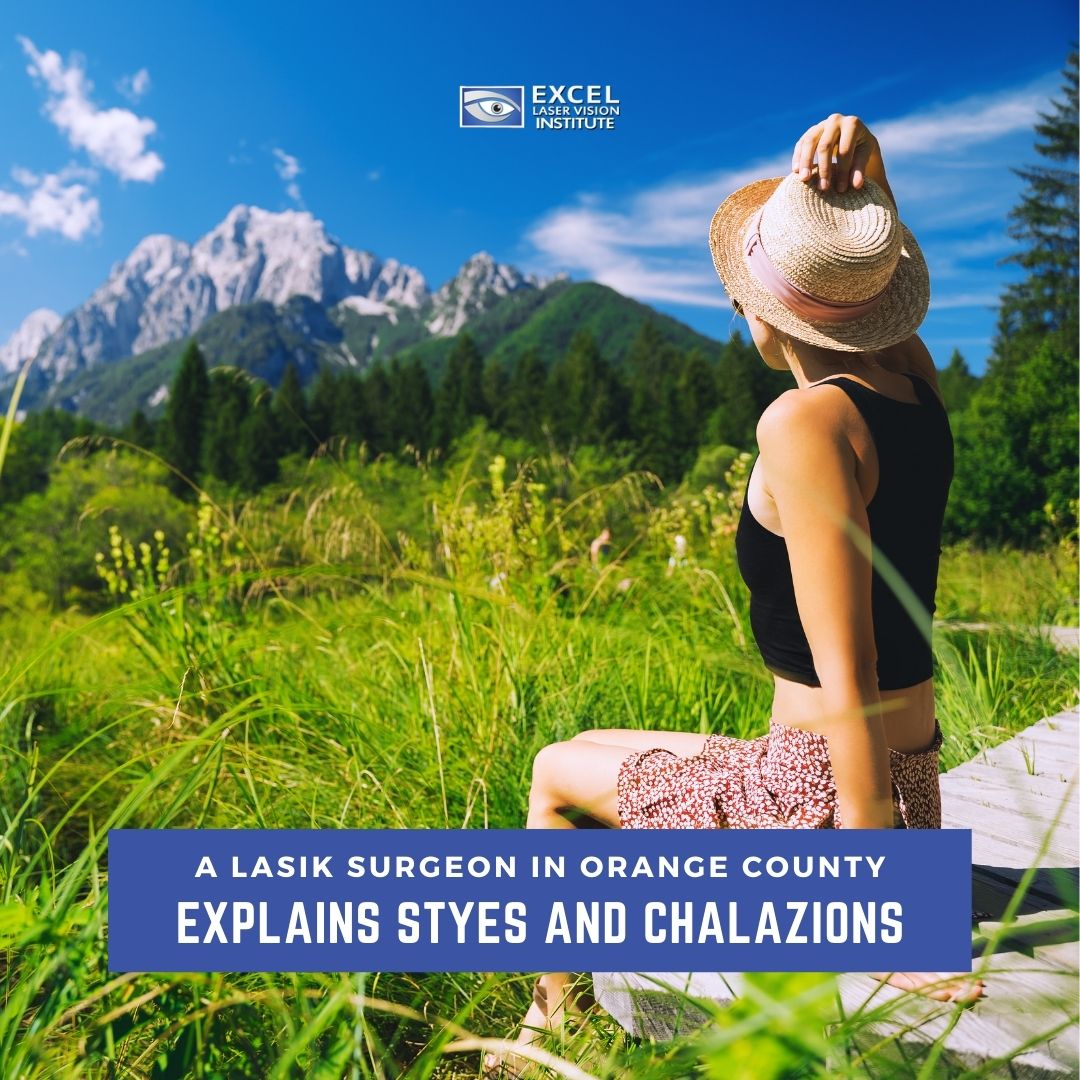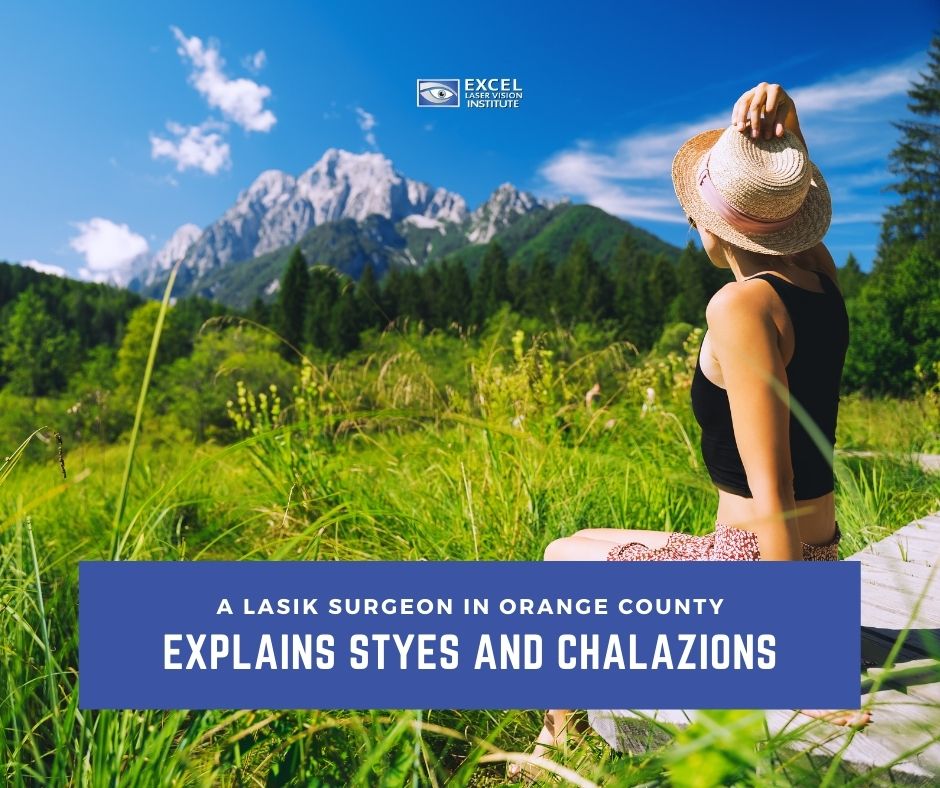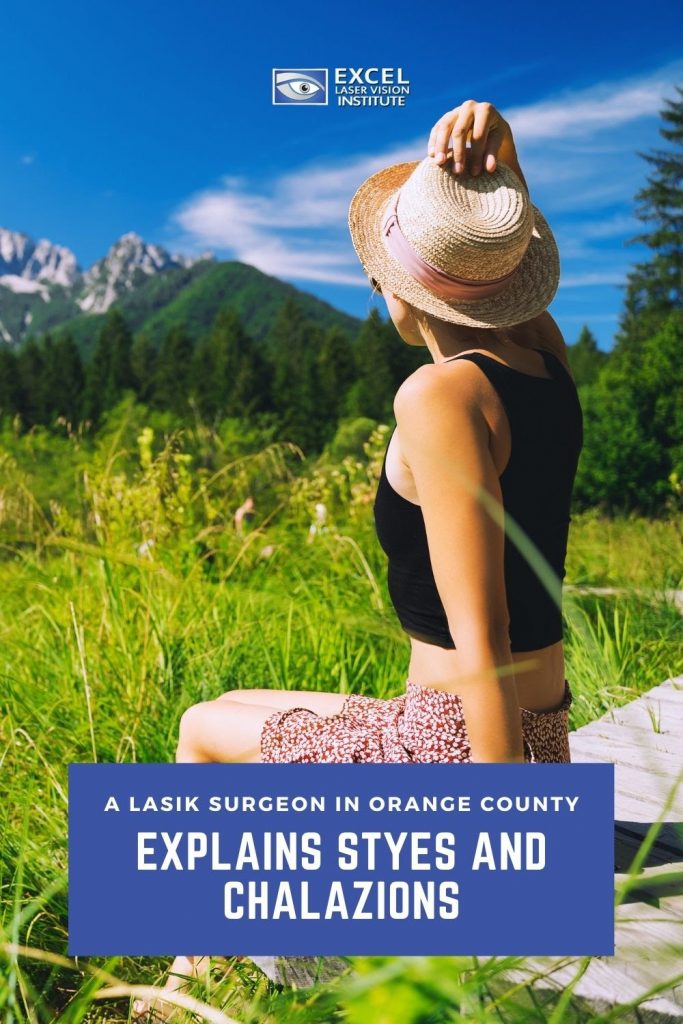
Eyelid bumps can be unsettling to find, especially if you have never experienced one before. LASIK experts in Orange County say that a painful bump on the eyelid could be classified as a stye. If it is painless, then it may be a chalazion. Here, we will delve into the difference between these two and what you can do if you find one.

A stye is a localized bacterial infection that can develop within a blocked oil-producing gland or in a follicle at the base of an eyelash. When fully developed, styes are a painful white or yellow bump that resemble a tiny eyelid pimple. Fortunately, many styes can heal on their own. Once the infection has cleared up, many styes will turn into a chalazion, which is painless.
Chalazion can also develop independently of styes when a meibomian gland becomes blocked. The meibomian glands are located in the eyelid and are responsible for secreting oil when we blink. This layer of protection prevents tears from evaporating too quickly, which causes dry eye. When a meibomian gland gets blocked, a painless chalazion can form. In some cases, they may grow so large as to obstruct vision.
According to Doctor Moosa, a LASIK surgeon in Orange County, many people who wear contacts are more susceptible to developing bacterial infections like a stye. When opting for laser eye surgery, patients eliminate one cause of irritation, which is contact lenses. Here are some of the other ways that people can develop a stye or chalazion:
- Blepharitis (also known as eyelid inflammation)
- Skin conditions (e.g. acne, rosacea, seborrhea)
- Viral conjunctivitis (also known as pink eye)
- Tuberculosis
Before receiving LASIK eye surgery in Orange County, an eye care professional will evaluate your eye health. Any infections or blocked meibomian glands will need time to heal. According to Doctor Moosa, a LASIK doctor in Orange County, styes typically take one to two weeks to heal. Chalazions can take up to a month to go away. You can speed up the process by keeping the area clean and trying some home remedies, according to the suggestions of your eye doctor. Here are some of the common ways to treat chalazions and styes:
- Use a warm compress – Many doctors recommend gently pressing a warm washcloth to your eye for five minutes in order to open up the skin’s pores and allow the eyelid pump to drain. You can try this several times a day to lessen the size of the bump.
- Use antibiotics or steroid drops – In some cases, a stye or chalazion may be incredibly inconvenient. If your eyelid bump is unusually large or painful, then your eye doctor may recommend the use of some prescribed drops or antibiotics.
- Keep your eyes clean – In order to avoid irritating a stye or chalazion more, do not rub your eye and always wash your hands before touching the area.
- Avoid squeezing the area – Unlike pimples, you cannot pop a chalazion or stye. Squeezing them could actually cause more complications. So, make sure you are treating the area according to your doctor’s wishes. You may be prescribed drops, oral pills, or ointments to help the area heal.
- Surgery – In the most extreme cases, a doctor may find it necessary to remove an eyelid bump via a simple surgery under local anesthesia. Make sure to discuss the procedure with your doctor so you have all the right information before you go in.




